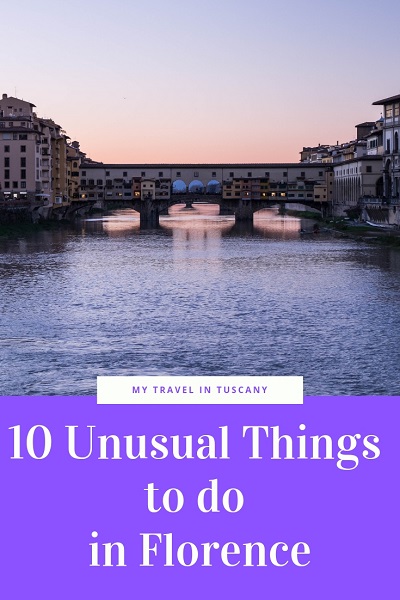10 unusual things to do in Florence? Discover this different way to visit Florence suggested by our Aussie friend Anne Harrison and her passionate love for the capital of Tuscany.
The gypsy didn’t draw breath. Curses both florid and impressive showered down upon me and my descendants – a possibility my guidebook had failed to mention. The gypsy opened my eyes, to unusual things to do in Florence and to how this city offers far more than any guidebook can suggest.
10 unusual things to do in Florence
1. The Robes Of St Francis
Founded in 1256, the Franciscan Chiesa di Ognissanti was once the parish church of the wealthy Vespucci family. Amerigo, the family’s most famous son, set sail to the New World – twice, in 1499 and 1501 – and proved the land to be a separate continent, not an extension of the Indies. From his detailed notes, cartographers drew the first maps of this land and also named it after him. You can see the maps a few streets away in the Museo di Storia della Science.
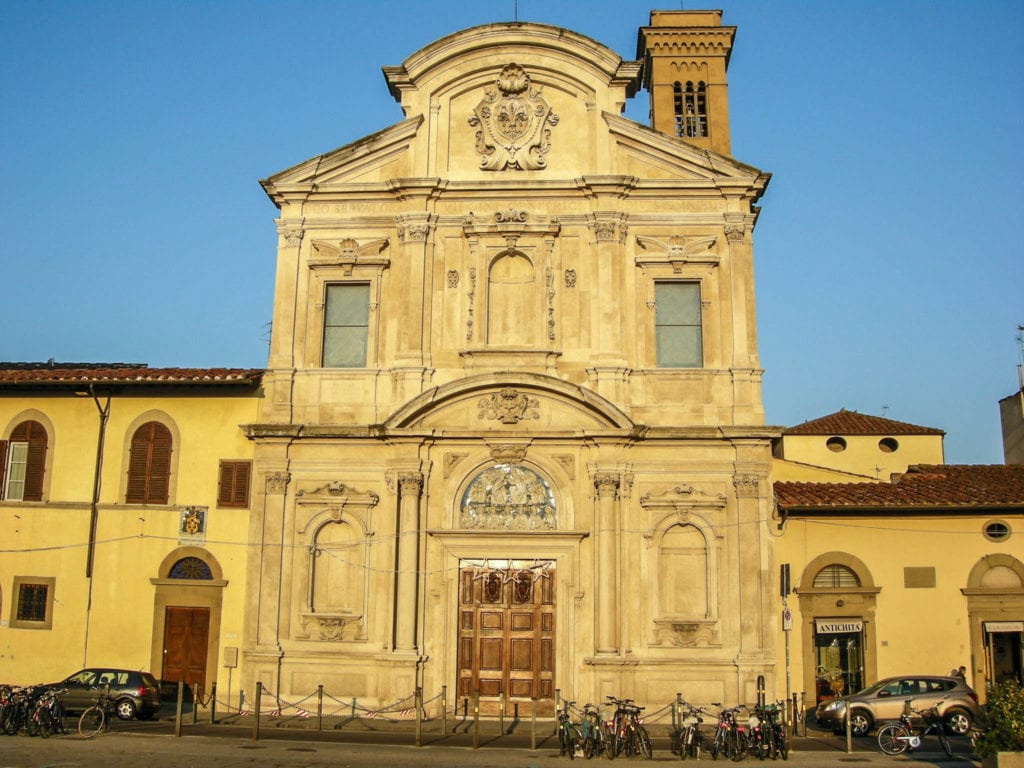
Like many Florentine churches, the Ognissanti could easily be an art gallery. Paintings by Ghirlandaio adorn the wall (a young Amerigo can be seen in his Madonna della Misericordia, circa 1472). In the refectory is Ghirlandaio’s Last Supper, which proved such an inspiration for Leonardo. Giotto’s Madonna and Child With Angels resides above the main altar, and a crucifix has recently been attributed to him. There are also works by Botticelli, who is buried in the south transept.
Amidst these wonders, in an unmarked side chapel, are the robes believed by many to be those worn by St Francis when he received the stigmata on Mount Verna in 1225 (distinct from the robes in the Basilica of Santa Croce). They are simply displayed, easily overlooked, and rarely mentioned in any tourist guide.
Is this not enough as unusual things to do in Tuscany? Then check the other nine suggestions…
2. The Painting finished by an Angel
With its distinctive arcades, the Piazza Santissima Annunziata has always played an important role in Florentine life. Every year a huge festival overflows from the piazza into the side streets as the town celebrates the Feast of the Annunciation. In the 14th C, the church in the piazza commissioned The Annunciation from the Dominican friar and artist Fra Bartolomeo. A master of sfumato, in his paintings Fra Bartolomeo, combined his religious beliefs with a fresh realism and emotional depth, and during his lifetime his paintings decorated churches and monasteries across Florence, Venice, and Lucca.
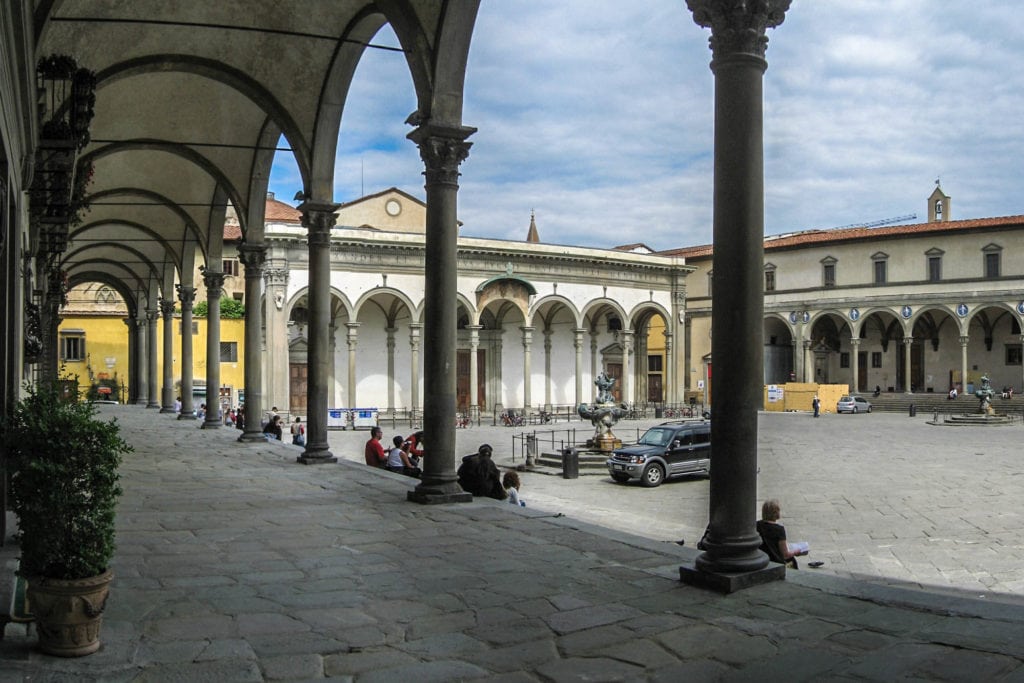
While working on The Annunciation, Fra Bartolomeo struggled to achieve an ethereal beauty for the Virgin’s face. Despairing of ever finishing the painting, legend holds the friar fell asleep, only to awaken and see an angel completing his work. Touched by this miracle, the fame of the painting rapidly spread. So many thronged to view the miraculous painting that in 1444 the Medici bank-rolled the Basilica della Santissima Annunziata, designed by Brunelleschi, to replace the church. Time, centuries of exposure, and poor restorations have not been kind to The Madonna. Today the miraculous Annunciation rests in a side chapel, usually obscured by oil lamps, candles, and votive offerings – many a bride leaves her bouquet here, seeking the blessing of Our Lady. Yet despite this, a monk’s simple piety and faith cannot be ignored – indeed, such things to do in Florence add to discovering the mystery of this city.
3. Walk Florence’s Medieval Streets
Resplendent under Brunelleschi’s cupola, the Duomo remains the quintessential symbol of Florence. Beside her stands the Baptistery of San Giovanni, the city’s oldest and most revered building. Near the Via dello Studio (on the south side of the piazza) is a stone plaque marking where Dante once sat and watched the construction of the Duomo before he was exiled from his beloved city. In these streets, the Mediaeval world remains tangible.
The Piazza Duomo still boasts houses from that time, complete with their coat-of-arms. Donatello’s studios were at No 28 (replaced in the 16th century by the Palazzo Strozzi-Niccolini). Especially around the Duomo, Florence’s maze of backstreets remains distinctly medieval. Along the Via Santa Margherita stands the 11th C church of the same name, where Dante first saw the woman he immortalized in his poetry. (Beatrice is also buried here, along with other members of the Portinari family.)
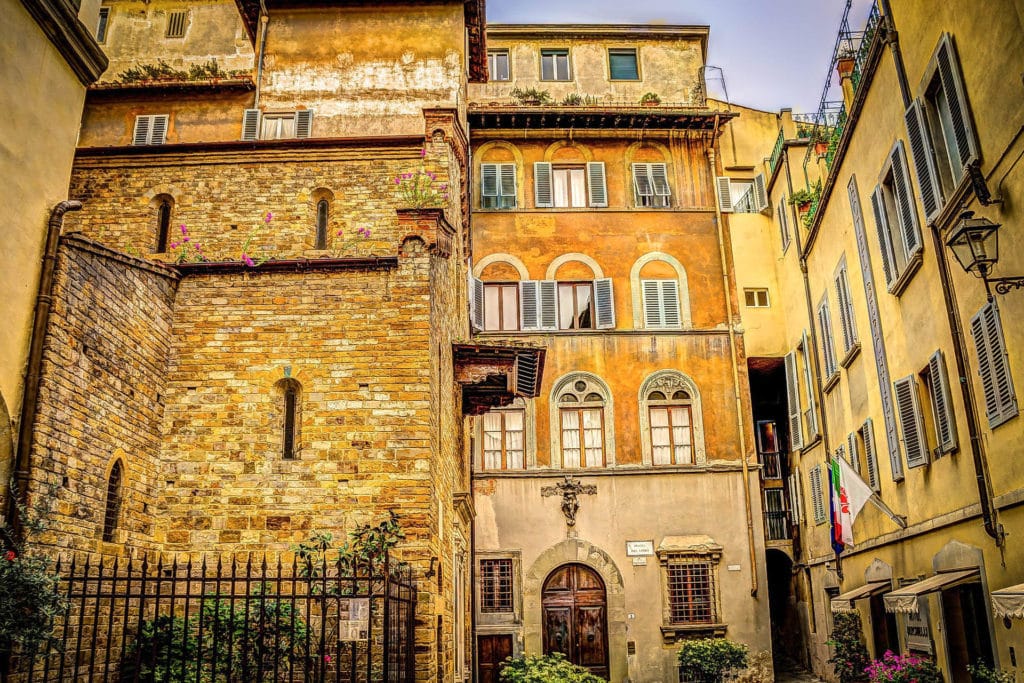
One of Florence’s most beautiful streets – the Borgo degli Albizi – runs through what was the heart of the medieval town, while the Via de Calzaiuoli was her thoroughfare, linking the rising Duomo to the Palazzo Vecchio. Nearby are Mercato Nuovo. Despite their name, they have been popular since the 11th century. Some private palaces survive, along with a few towers – or torre, although these were outlawed in 1250 to stop rival families competing in displays of wealth and power. The easiest torre to see is on the Via delle Terme (named after the Roman baths which once stood here). Simply running my hand along a wooden door was enough to transport me to the past: it was inches thick to protect against the fears of the night or the thrust of a knife from a street skirmish.
Near the Ponte Vecchio, the Via dei Neri bends as it follows the shape of the old Roman port; tablets along the length of the road mark the height of both the 1333 and 1966 floods. Life in medieval times was not always so different from our own.
4. Michelangelo’s First Works
Like his predecessor Leonardo, Michelangelo towers over the world of art. Yet every genius has a beginning. On the Via Ghibellina stands the Casa Buonarroti, a conglomeration of three houses once owned by Michelangelo Buonarroti. Some of the maestro’s works on display are a slave intended for Julius II’s tomb, a small cartoon of the Madonna and Child, as well as numerous paintings and some 250 sketches.
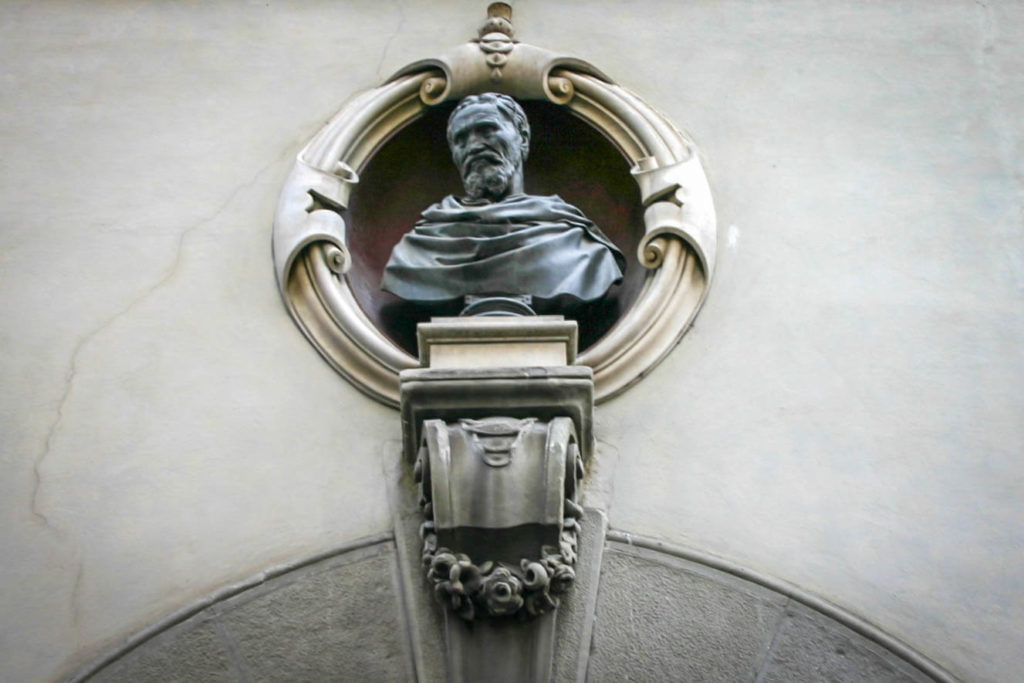
The library alone contains over 10,000 volumes, which include many letters by Michelangelo, plus family archives. Amongst the homage to the artist and his times is an eclectic collection of work by his descendants. The scope of Michelangelo’s genius is hinted at in a small marble bas-relief, The Madonna of the Steps, carved between 1490-92 when he was only 15 or 16.
Many see the influence of Donatello in this work. At the time Michelangelo lived in the Medici household, where the sculpture garden displayed newly discovered ancient works. This influence can be seen in his Battle of the Centaurs, with the male torso twisted in a muscular tension which became a dominant theme in both his sculpture and paintings. As with his later works, Michelangelo contrasts rough marble with the highly finished sculpture.
You can also take a tour dedicated to the Life of Michelangelo. We did it and this is our experience.
Michelangelo & Much More. A Day in the Life of the Divine One.
5. Eat Like A Local
The Casa Buonarroti is in the Sant’Ambrogio district, a unique and vibrant area of Florence filled with more locals than tourists. Just east of the house is the Mercato di Sant’Ambrogio, a smaller, and far less touristy version of the San Lorenzo food markets. Lunch at one of the Tavola calda (a stall selling snacks or meals) is always a bargain, the prices dropping further still in the last hour of trading.
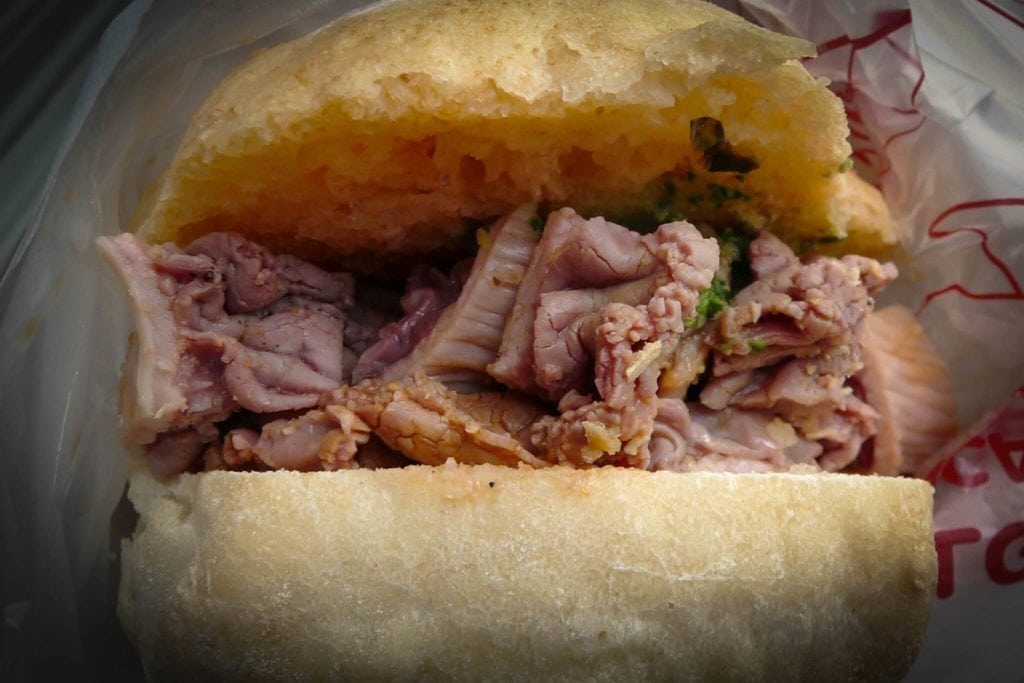
Why not throw caution to the wind and seek out a traditional trippaio (tripe food stand)? These offer a range of hot and cold choices, including the traditional lampredotto sandwich, once an inexpensive meal for the working classes. The fourth stomach of the cow is cooked in broth with herbs and tomatoes. Then it is thinly sliced then placed on a broth-soaked bun with a choice of accompanying sauces. This is one of the many things to do in Florence that instead involves palate!
6. The chalice which stopped the plague
The Sant Ambrogio takes its name from the Chiesa Sant’Ambrogio. Although a tad understated in comparison to the other churches in Florence, it is a place founded on a legend. Dating back to at least 988 AD, it is one of the city’s oldest churches. And it is believed St Ambrose stayed on this site in 393 AD. A legend says that on 30th December 1230, the parish priest Uguccione found a chalice that had not been cleaned and contained blood rather than wine. This Eucharistic miracle made the church a place of pilgrimage. The chapel to the left of the main altar is the Cappella del Miracolo. A painting in the Cappella del Miracolo, by Cosimo Rosselli, shows a procession carrying this miraculous chalice; the Florentines believed the chalice helped save them from the plague in 1340.
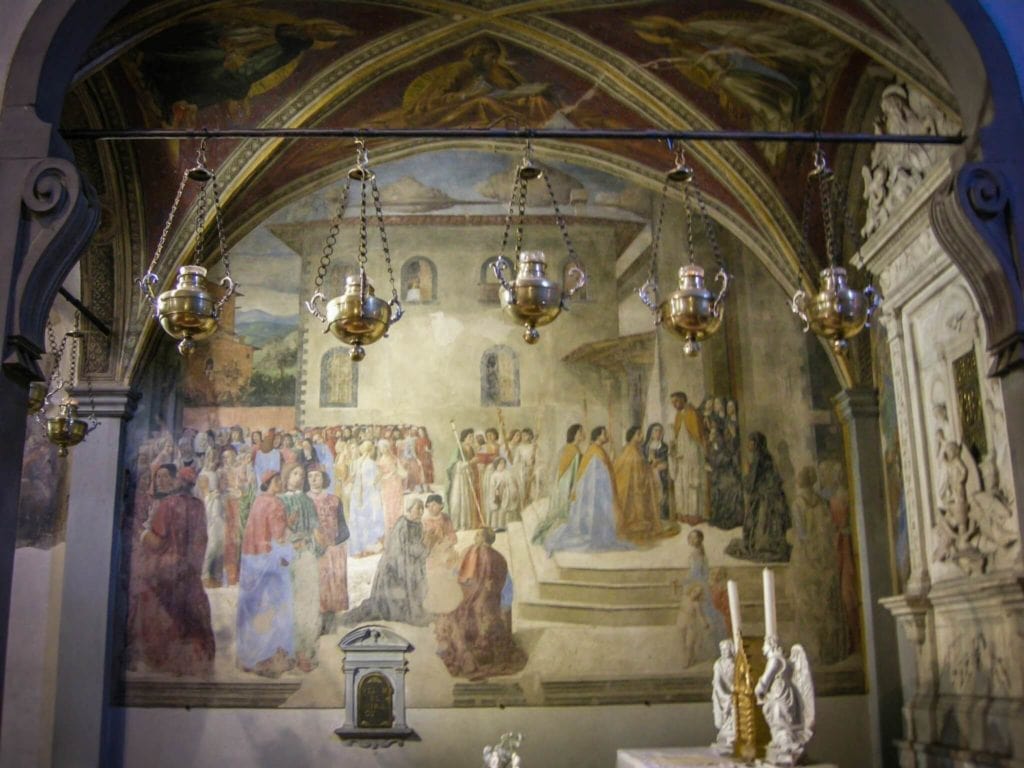
Of more interest, however, is the social commentary of the paintings. As always, Rosselli’s works are filled with his contemporaries, and the painter himself can be seen at the extreme left of the painting wearing, naturally, a black beret. From here it is but a short walk back towards the Arno, taking in Santa Croce, or perhaps The Horne Museum. Or, the better to clear the mind of a surfeit of artistic wonders, perhaps a gelato as you wander across the Ponte Vecchio, staring at all the gold on display and dreaming of buying a piece of jewelry or two.
7. Visit an ancient herbalist
However, seeking unusual things to do in Florence, why do not try with a different sense as the scents? Despite this surfeit of wonders, Florence’s past still lives. Take a look at some specialty shops that you can find all over the center – whether selling books, ceramics, or even furniture. The workshops of art restorers line the backstreets near the Uffizi. Near the Santa Maria Novella, at no. 16 Via Della Scala, is the Officina Profumo-Farmaceutica di Santa Maria Novella. Established by Dominican friars in 1221, it is one of the world’s oldest pharmacies.
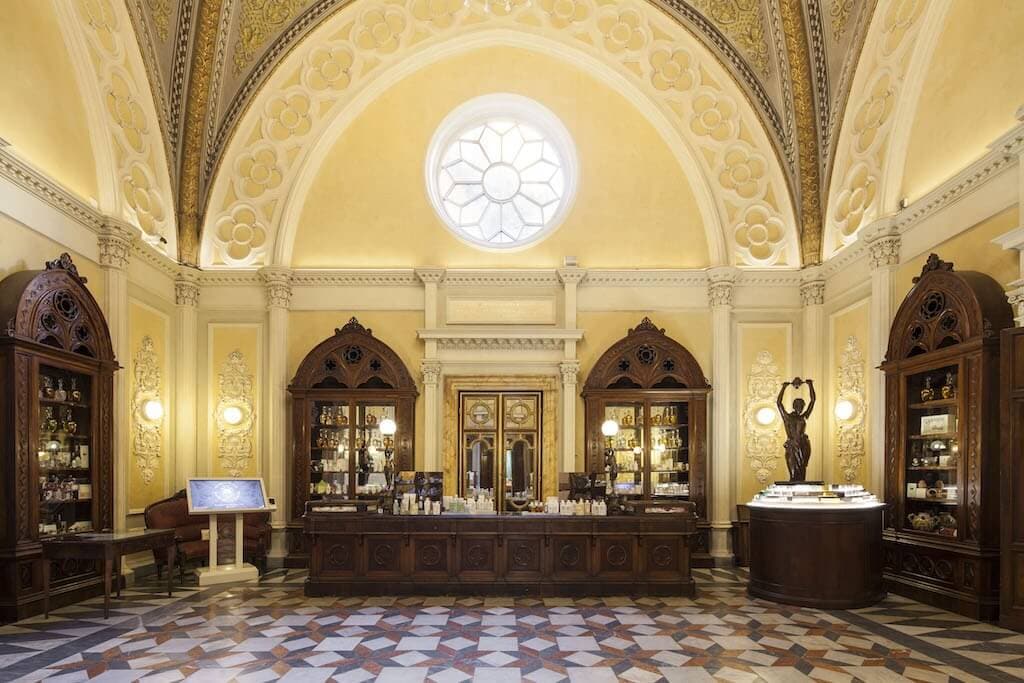
Open the door, and whisked away by intoxicating scents. They still made Perfumes, lotions, and remedies to ancient recipes. Look for other herbalists near the Piazza della Signoria, at Via Vacchereccia 9r, and Via Calimala 4r.
8. Walk from the Ponte Vecchio up to San Miniato al Monte
A walk of a few minutes from the Ponte Vecchio leads to Santa Felicita. A church has existed on this site since the 4th C. In the 2nd century AD, some Syrian-Greek merchants settled along a busy consular road here, bringing Christianity to the city. Inside the church of Santa Felicita are some masterpieces of 16th-century Florentine painting. The Vasari corridor runs through the nave, which enabled the Medici to attend Mass unseen by the great unwashed. On the left of the church runs the Costa di San Giorgio. Galileo once lived at no 9.
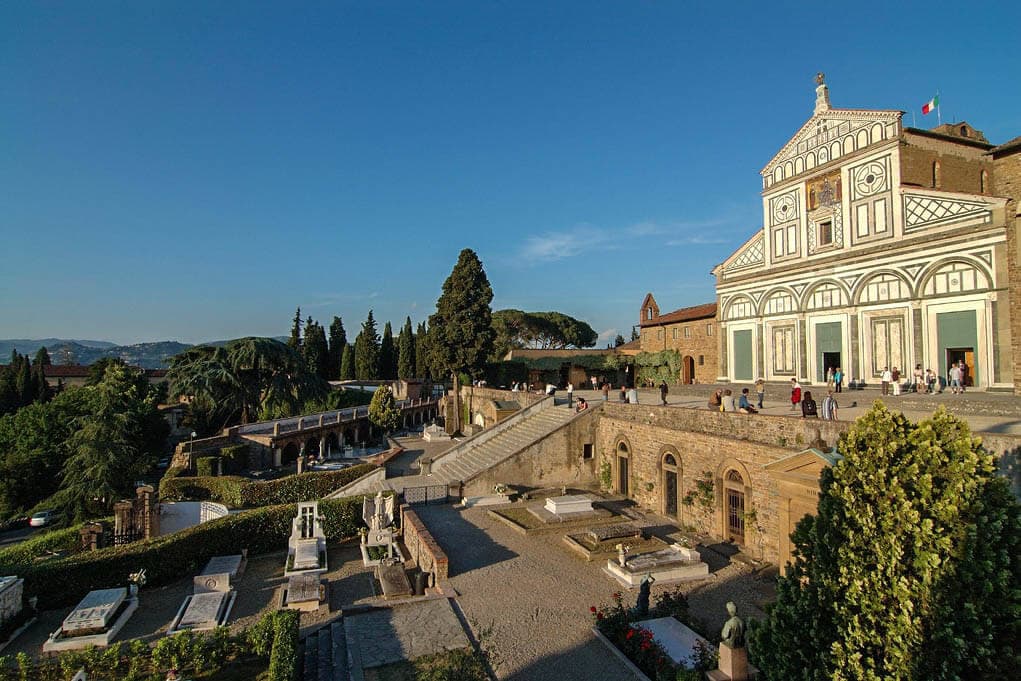
At the end of the road stands the Porta San Giorgio, the oldest of the surviving city gates. A steep climb past the Forte di Belvedere and along country lanes ends at the Piazzale Michelangelo. With stunning views over Florence, it is perennially crowded, and much of the square becomes a parking lot.
However, another short (but steep) walk leads to the Basilica San Miniato al Monte. Perhaps this is the most beautiful place of worship in Florence. Its classical façade of green-grey and white marble has looked down over Florence since 1013. I arrived as the setting sun bathed the city in vibrant hues. After listening to a Gregorian mass, I emerged to see a full moon rise over the city. There is no better way to remember Florence.
9. Padlock the Duomo
The views are reason enough to climb Duomo’s 463 stairs and to include this visit in your list of things to do in Florence. Impressively, many Italian women manage this feat in heels. In unobtrusive corners in the stairwell, I found marks left by the medieval builders. Then, on descending, I traversed the inner ceiling at the height of the gods, at times almost a hand’s breadth away from Vasari’s frescos. The steepest part of climbing the Duomo is over the arch. This is the place to find lovelocks – padlocks placed by couples who then throw away the key, so declaring their undying love.
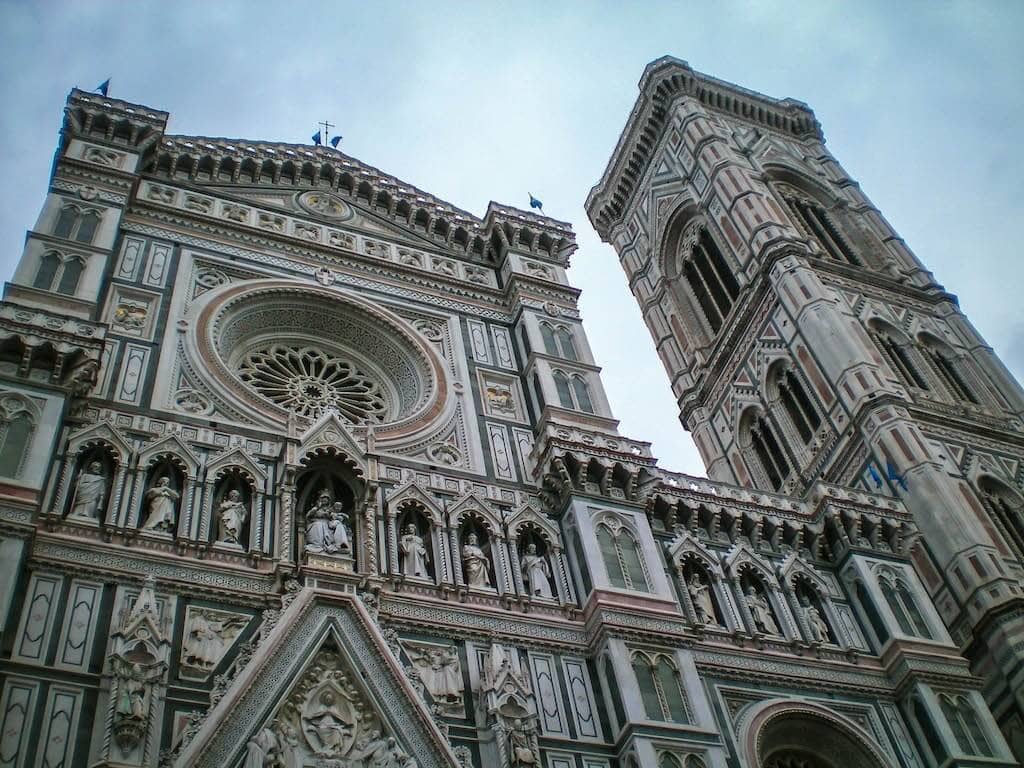
Once I saw the padlocks, I discovered many more. One or two on a grille covering a window, on an opening, or on an inconspicuous bar. The masses of love locks on the Ponte Vecchio are renowned (as they are on the Pont des Arts in Paris, and as frequently removed), yet placing one here, in the heights of the Duomo, felt incredibly personal. The visit to the Cupola is very popular, so a good idea is to buy a Priority Entrance tour.
Get your FLORENCE DOME CLIMB TICKET HERE and reach the top of the Duomo
See Where Leonardo Tried To Fly
As the last of the things to do in Florence, I mention the overlooking point from Fiesole. This delightful hill town was founded by the Etruscans and once a rival to Florence, it became a favorite summer retreat for the likes of the Medici (and now the Prince of Wales). The nearby caves of Maiano were famous for the pietra fiesolana, favored by many a Medieval and Renaissance sculptor.
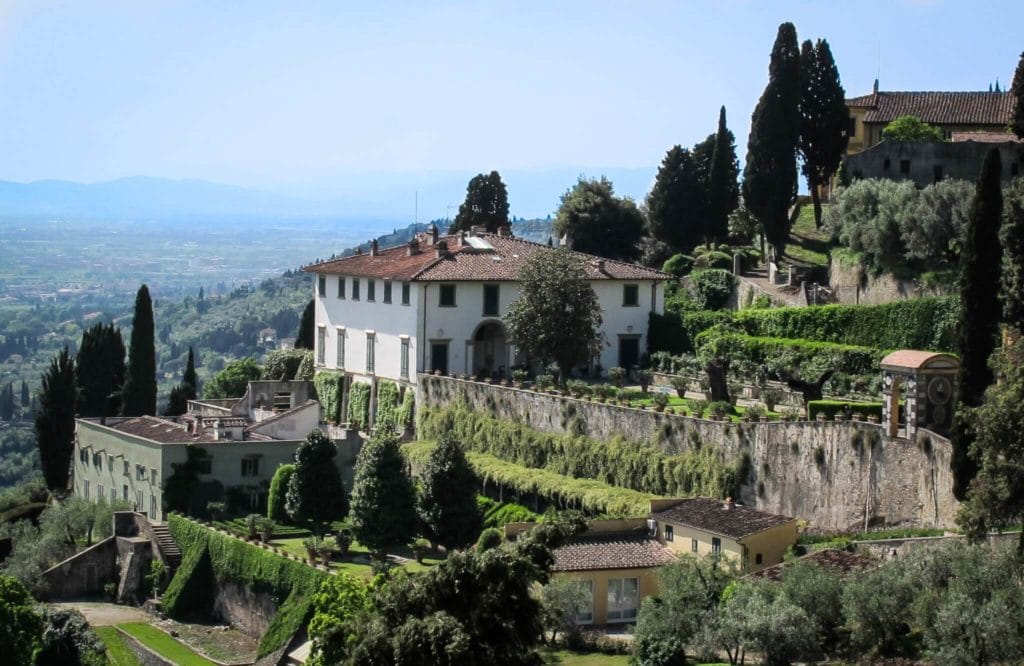
A walk through the forest above Fiesole leads to Monteciceri Hill. A small plaque (notoriously difficult to find, and I swear it moves between visits) marks the spot where Leonardo tried to fly in 1506. A misguided volunteer had some wings strapped to his back before leaping off the edge of the hill. He was lucky to escape with a few broken bones, and Leonardo suffered broken pride.
And the gypsy? Perhaps guessing I don’t believe in curses, her flow of expletives came to a colorful end, and she simply wandered away, cornered another tourist, and began again. How many other unusual things to do in Florence do you know? I am curious to read your comments!
Florence, Where to Stay
If you still have to book your stay in Florence, here is a short list of accommodations for all budgets:
- The Student Hotel TSH Florence Lavagnini: a brand new hostel with an amazing pool on the roof.
- B&B Hotel Firenze City Center: a comfortable three-star hotel, a few steps from the pedestrian area of Borgo La Croce.
- Hotel Palazzo Guadagni: on the other side of the Arno, in San Frediano, one of the most beloved areas by the Florentines.
- Hotel Milù: modern and classic furniture mixed in the heart of Florence.
- Villa Cora: on the way to the Piazzale Michelangelo, a luxury five-star full of charm.
- St. Regis: spend your days in Florence in a building designed by the Maestro Brunelleschi.
Pin It for Later!
